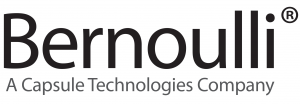
A Technology Safety Net
that Improves Patient Safety
by Jeanne J. Venella, DNP, MS, CEN, CPEN
Chief Nursing Officer
The increasing complex state of health care and compounding nursing vacancies are playing a role in un-achieved outcomes and putting patients at risk. This is the reality that most hospitals face today. More critically-ill patients are seeking care and are being cared for by fewer clinicians. According to one report, a few factors of rising acuities in today’s healthcare environment are:
- older patients,
- medical “success stories” that lead to complex chronic conditions,
- under-resourced or unable-to-access primary care networks,
- and untreated illnesses for the underinsured who eventually seek episodic emergency care later and sicker.
And all this at a time when the U.S. is facing a massive nursing shortage. In the article, “The U.S. Is Running Out of Nurses”, Rebecca Grant shares insight from the Bureau of Labor Statistics that 1.2 million vacancies will emerge for registered nurses between 2014 and 2022. And according to a team of Vanderbilt University nursing researchers, by 2025 the shortfall is expected to be “more than twice as large as any nurse shortage experienced since the introduction of Medicare and Medicaid in the mid-1960’s”.
During my 35-year career as an emergency department registered nurse, I have witnessed many tragedies – some on a large-scale – with either human or natural causes. However, the real tragedies are the daily struggles of children and adults left with no access to primary care. Those that must use emergency departments as their care provider because they can’t get an appointment with a specialist for many months. The history of emergency nursing is that we always provided the communities we serve as a safety net. Unfortunately, more recently that net has been stretched beyond its limits, leaving many patients unserved.
The solution that goes above and beyond
Coupled with the above challenges are the increased burdens of a technology-laden workflow that has given little or no thought to the impact in the nurse’s ability to care for their patients in a timely way. Our Bernoulli clinical surveillance solution is a technology safety net designed to help alleviate some of the challenges of caring for high acuity patients. The solution enables caregivers to monitor patients in real-time in emergency departments and operating rooms, post-anesthesia care, intensive care, medical-surgical, telemetry units, and other healthcare settings such as long term acute care. The Bernoulli system connects to a variety of medical devices including ventilators, infusion pumps, and patient care monitors.
Beyond basic surveillance, the system links retrospective patient data (from the EHR) with real-time patient vitals for early warning notifications leading to early interventions. For example, the Bernoulli respiratory depression surveillance solution sends an early warning notice if a patient is in potential danger of an adverse event. Here’s how. Bernoulli correlates extensive data points such as patient demographics and lab values with real-time patient parameters such as temperature, heart rate and blood pressure. Early intervention can help prevent rising acuity and severely compromised patient conditions. This added layer of surveillance, will help to reduce burdens facing an already limited clinical staff.
It is my belief that today’s complex state of healthcare needs this technology safety net to enhance the care team’s ability to provide timely, real-time patient care that can alter the outcomes and improve patient safety.
About the Author:

Jeanne J. Venella,
DNP, MS, CEN, CPEN
Chief Nursing Officer
Jeanne is a doctoral prepared nursing practice expert with extensive experience as an innovative leader in healthcare. With her combined knowledge of day-to-day of operations and as Bernoulli’s primary champion for complex nursing topics, Jeanne’s strategic objective is to advance evidence-based practice. Her real passions are in creating small internal team structures to improve workflow and efficiency processes which include assessing technical solutions; and implementation of systems designed to improve teamwork, patient outcomes, safety and accuracy. View Jeanne’s profile on Linkedin.


